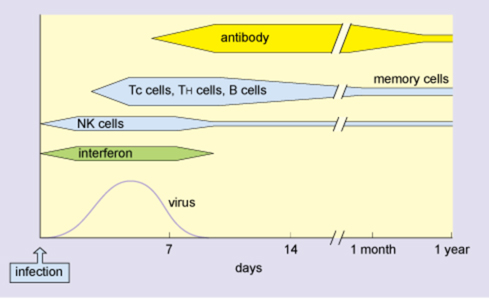2.1 Phases of the immune response
So far, we have described several different types of immune responses that recognise free virus or virus-infected cells, but how do these responses relate to each other? Figure 8 shows when these reactions are most important during a response to an acute virus infection.
Interferon and NK cells are active during the earliest phases of infection. Adaptive immune responses mediated by lymphocytes develop a few days after infection and are involved in clearing infected cells. Antibody is released by plasma cells derived from differentiated B cells and persists for many months, although it gradually declines. Long-term adaptive immunity is primarily provided by the memory cells, which may be either B cells or T cells.
One point you might have missed is that the number of lymphocytes initially available which can recognise a novel infection is relatively small. It takes several days for them to divide repeatedly in order to produce enough lymphocytes of the correct specificity to combat the novel infection. During this early phase of infection, interferons and NK cells are particularly important in slowing virus spread.

